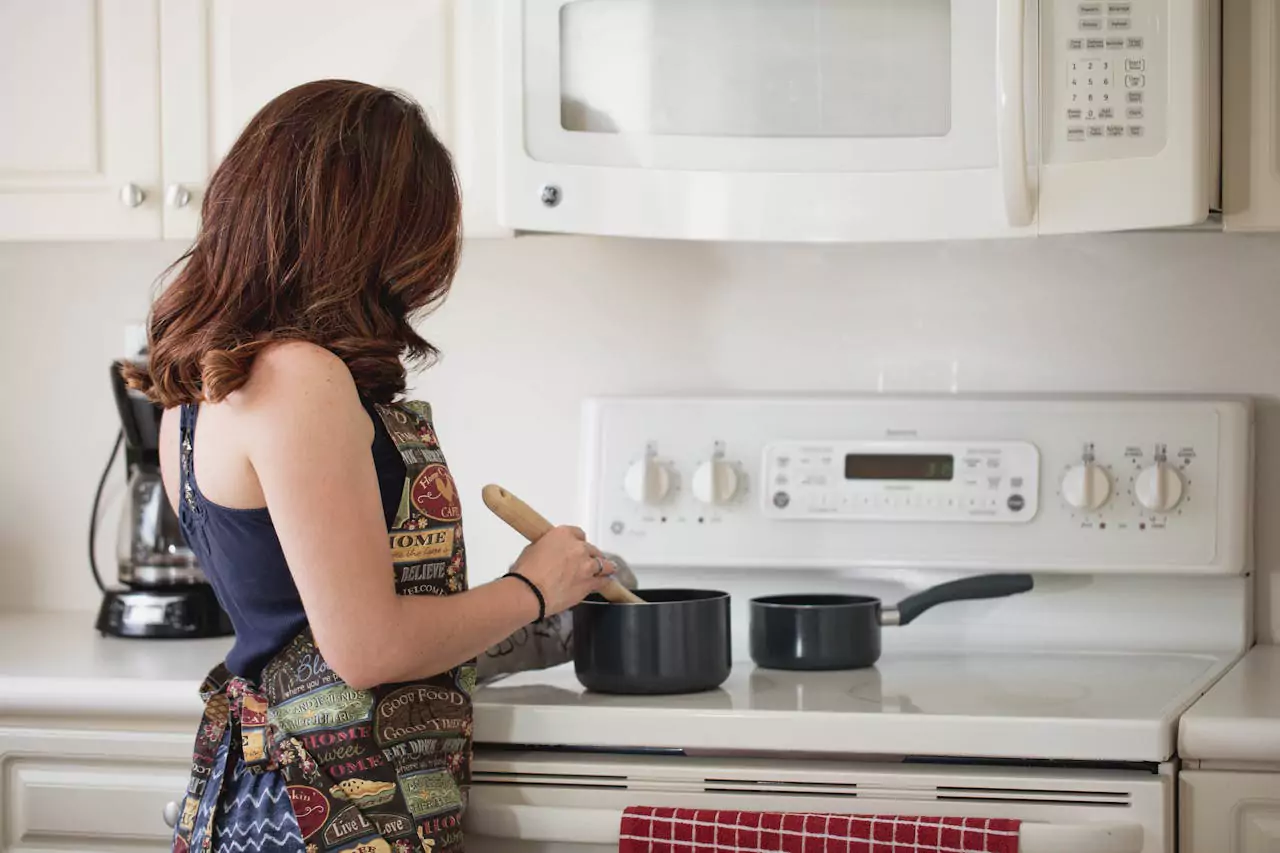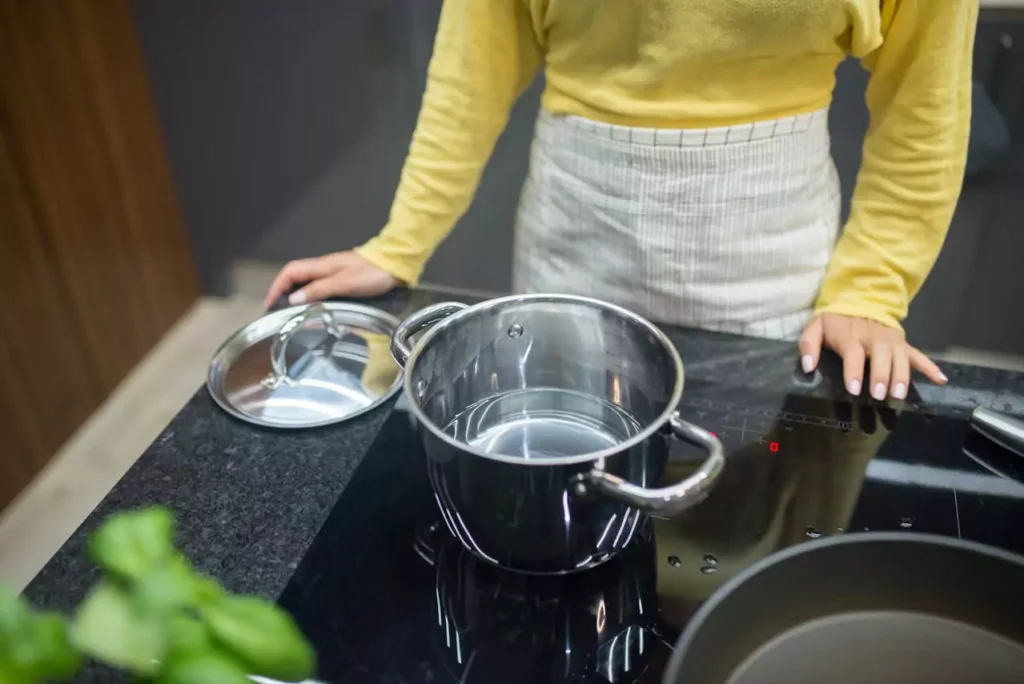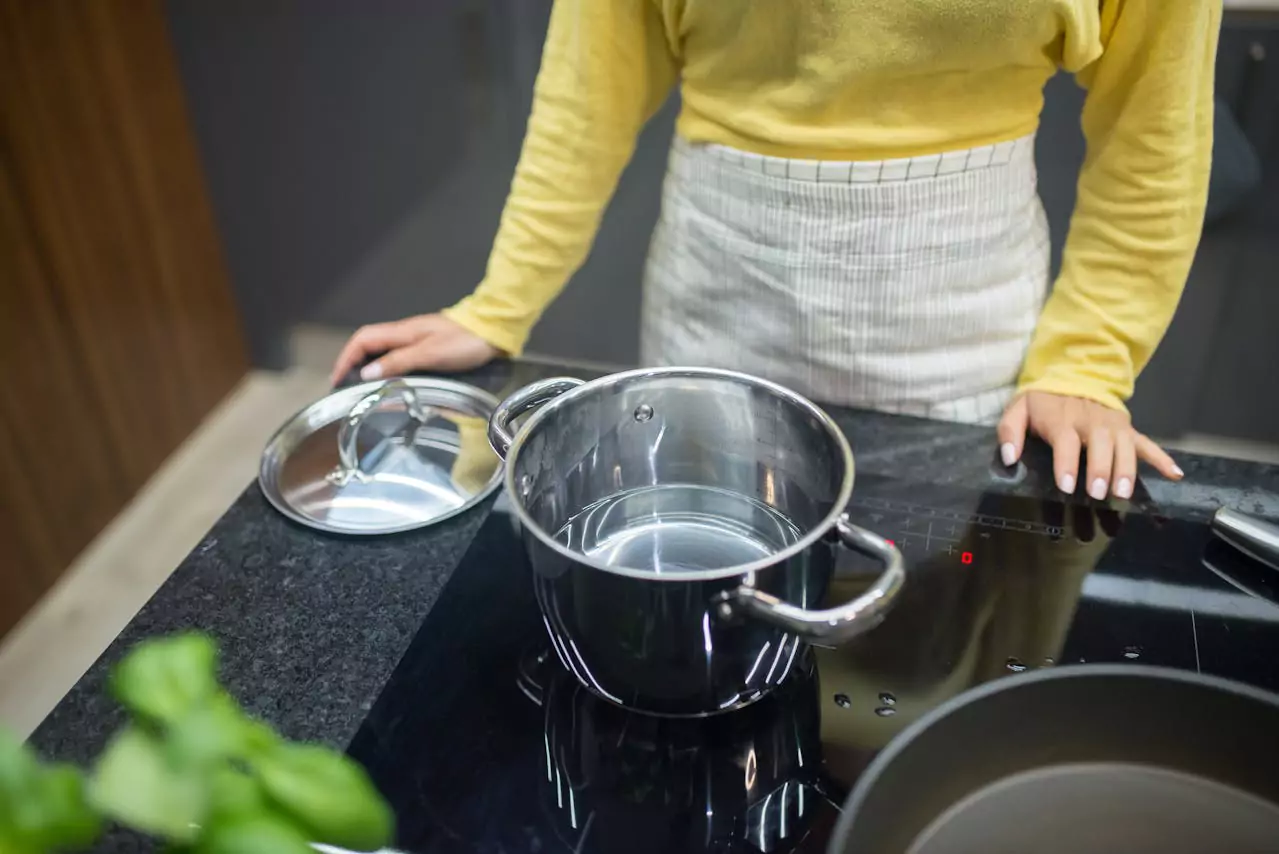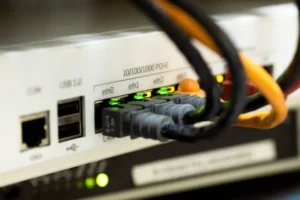Now Reading: Will Induction Cookware Work on an Electric Stove?
- 01
Will Induction Cookware Work on an Electric Stove?
- Home
- Home Appliances
- Kitchen Appliances
- Will Induction Cookware Work on an Electric Stove?
Will Induction Cookware Work on an Electric Stove?
![]() Anne MaddisonHome Appliances, Kitchen AppliancesAugust 4, 202579 Views
Anne MaddisonHome Appliances, Kitchen AppliancesAugust 4, 202579 Views

The short answer is yes, induction cookware can work on an electric stove. But there are a few things you should know first. Most induction-ready pots and pans are made with materials that also work on electric stoves, but not all of them perform the same way.
Several factors affect how well induction cookware works on an electric stove. These include the material, the thickness of the base, and how flat the bottom is. Some cookware may take longer to heat or may not sit evenly on the coil or glass surface. In this blog, we’ll explain what induction cookware is, how it works on electric stoves, and what to consider before using it.
Let’s start with the basics.
What Is Induction Cookware?
Induction cookware is designed to work with induction cooktops, which use magnetic energy to heat your pots and pans directly. Unlike regular gas or electric stoves that heat the burner first, induction cooktops send energy straight to the cookware itself. This makes cooking faster and more efficient.
What Makes Cookware Induction-Ready?
For cookware to work on an induction stove, it needs to have a magnetic bottom. Induction cooking works differently from gas or electric stoves. Instead of using flames or a hot coil, it uses a magnetic field to heat the cookware directly. But this only works if the pot or pan can react to that magnetic field.
The easiest way to check if your cookware is induction-ready is by using a small magnet. Place the magnet on the bottom of the pan. If it sticks firmly, your cookware should work on an induction stove.
This magnetic reaction is what makes induction cooking more efficient. The heat forms inside the pan, not underneath it. That means the pan heats up quickly, and there’s less wasted energy.
Stainless steel and cast iron are two of the most common materials that work well on induction stoves. Some cookware made with aluminum or copper may not work unless they have a special magnetic layer added to the bottom.
Common Materials Used for Induction Cookware
Not all cookware works on induction stoves, but many popular types can, if they have a magnetic bottom. Here’s a closer look at the most common materials used and how they perform with induction:
Stainless Steel
Stainless steel is one of the most popular materials for cookware. It’s strong, doesn’t rust easily, and looks nice in any kitchen. But not all stainless steel works with induction. That’s because some types don’t have enough iron to react to the magnetic field.
To solve this, many cookware brands add a magnetic layer to the base. This layer allows the cookware to heat properly on an induction stove. If you’re not sure whether your stainless steel pan is induction-ready, try placing a magnet on the bottom. If it sticks firmly, it should work.
Cast Iron
Cast iron is naturally magnetic, so it works great with induction. It heats up slowly but holds onto heat for a long time. That makes it ideal for cooking stews, soups, and anything that needs steady heat. One downside is that cast iron is heavy and can scratch glass cooktops if not handled carefully. But for many people, the cooking performance makes it worth it.
Carbon Steel
Carbon steel is very similar to cast iron. It’s also magnetic, induction-friendly, and heats evenly. The main difference is that it’s usually lighter and heats up a bit faster. Many professional chefs like carbon steel for frying and sautéing because it gives them more control. Like cast iron, it needs to be seasoned regularly to prevent rust and improve non-stick performance.
Enamel-Coated Cast Iron
This is cast iron with a layer of colorful enamel coating on the outside. It works the same way as regular cast iron on an induction stove because the core is still magnetic. The enamel adds a smooth, non-reactive surface that doesn’t need seasoning. It also helps prevent rust.
Materials That Don’t Work Unless Modified
Some cookware materials, like aluminum, copper, and glass, don’t naturally work with induction. That’s because they aren’t magnetic. However, many modern cookware brands add a special magnetic disc or layer to the bottom of these pans so they can still be used on an induction stove. If you prefer these materials for their heat distribution or appearance, look for versions labeled “induction-compatible” or test the base with a magnet before buying.
How Does an Electric Stove Work?
An electric stove uses electricity to heat up cookware through metal heating elements. When you turn it on, these elements heat up and transfer heat directly to the bottom of your pan. This process is called conduction.
There are two common types of electric stoves:
- Coil-Top: Uses exposed metal coils. Your cookware sits directly on them. They heat up quickly but can be uneven.
- Smooth-Top (Glass or Ceramic): Has a flat surface with heating elements under the glass. It looks modern and is easier to clean, but it may take longer to heat up or cool down.
Electric stoves do not need special cookware. As long as the pot or pan can sit flat on the surface and conduct heat, it should work just fine.
Why Induction Cookware Works on an Electric Stove
Most induction cookware can also be used on an electric stove. It works because the materials and design of induction pots and pans are usually compatible with how electric stoves heat up.
Why It Works
Induction cookware is often made with materials like cast iron or stainless steel, which also work well on electric stoves. These materials are good at holding and spreading heat. Also, induction cookware is made with a flat bottom, which is important for electric stoves because they transfer heat through direct contact. A flat base helps the pan stay stable and allows the heat to move evenly across the surface.
When It Might Not Work Well
While most induction cookware will work on electric stoves, there are a few things to watch out for:
- Thin Bottoms – Some induction cookware, especially budget options, may have very thin or lightweight bases. These can sometimes warp under high heat, especially on coil-style electric burners.
- Uneven Contact – If the bottom of the pan is smaller than the electric burner, heat might not spread evenly, which can lead to slower or uneven cooking.
- Special Coatings – Some induction pans have special coatings or textures on the bottom. If these are damaged or too smooth, they might slide around or heat less efficiently.
In most cases, though, if you already have cookware that works on an induction cooktop, you can safely use it on an electric stove too.
Pros and Cons of Using Induction Cookware on Electric Stoves
| Pros | Cons |
|---|---|
| Good heat retention: Most induction cookware is made with materials like cast iron or layered stainless steel, which hold heat well. This helps keep cooking temperatures steady and consistent on electric stoves. | May scratch smooth-top electric stoves: If the cookware is heavy or has a rough or unpolished bottom, it can leave marks or scratches on ceramic or glass cooktops. It’s important to lift, not slide, the cookware when moving it. |
| Durable construction: Induction pans are usually built to last. They’re often designed with multiple layers or heavy-duty bases that can handle daily cooking without wearing out quickly. | Some are heavier than traditional cookware: Cast iron and multi-layered steel pans can be bulky. If you’re used to lightweight aluminum cookware, switching to induction types might feel heavier and harder to handle. |
| Works across multiple stove types: One of the biggest advantages is flexibility. Induction cookware isn’t just for induction cooktops — it can also be used on gas, electric coil, and smooth-top stoves, as long as the base stays flat and undamaged. | May be more expensive: Induction cookware tends to cost more than regular pans. That’s because it’s built with strong materials and designed to work with advanced technology, but the price may be a downside for some people. |
| Often high-quality materials: Many induction-ready pans are made with premium materials because they need to perform well under magnetic heating. These same features make them great for electric stove use too. |
How to Know If Your Induction Cookware Will Work on Electric Stoves
If you’re not sure whether your induction cookware will work on an electric stove, here are a few easy ways to check.
First, try the magnet test. Take a regular kitchen magnet and place it on the bottom of your pan. If it sticks firmly, that means your cookware has a magnetic base and should work well on both induction and electric stoves.
Next, check the manufacturer’s information. Most cookware will say on the box or product listing if it’s compatible with different stove types. Look for phrases like “works on all cooktops” or “induction-ready.”
You can also look at the bottom of the cookware. Many pots and pans have symbols that show what stove types they work with. If you see a little coil or zigzag icon, that usually means it’s good for induction and electric use.
Lastly, pay attention to the base. For electric stoves, it’s important that the bottom of the pan is flat. If the cookware is warped or rounded, it won’t sit evenly on the burner, which can lead to uneven heating.
Check out our detailed guide on induction stove safety, including what causes burns and how to avoid them.
Tips for Using Induction Cookware
Even though induction cookware works well on electric stoves, using it the right way can help protect both your pots and your stovetop. Here are some helpful tips to keep in mind:
Lift, don’t drag
Induction cookware is often heavier than regular pans, especially if it’s made from cast iron or thick stainless steel. Dragging these heavy pans across a smooth glass or ceramic stove can leave scratches or marks. To avoid damaging the surface, always lift the cookware when moving it.
Keep the bottom clean
The underside of your pan touches the burner directly, so if it has grease, burnt food, or bits of debris stuck to it, it can cause burn marks or stains on your stovetop. Make it a habit to wipe down the bottom of your pans before and after cooking. A clean base also helps the heat transfer more evenly.
Watch for warping
Some cheaper or thin induction cookware can warp over time, especially if it’s exposed to sudden temperature changes (like placing a hot pan in cold water). A warped pan may not sit flat on your electric burner, which can cause uneven heating and make cooking more difficult. If the bottom of the pan looks rounded or wobbles when placed on a flat surface, it may be time to replace it.
Start with lower heat
Induction cookware is made to respond quickly to heat, so when used on an electric stove, it may heat up faster or retain heat longer than you’re used to. To prevent food from burning or sticking, begin cooking at a lower heat setting until you get familiar with how your new cookware behaves. You can slowly increase the temperature as needed.
Use cookware that fits the burner
Make sure the size of the pan matches the size of your electric stove’s heating element. If the pan is too small, it won’t heat evenly. If it’s too large, it may take longer to cook food properly. A good fit helps with consistent heat and better results.
By following these tips, you can make the most out of your induction cookware while keeping your electric stove in great shape.
Recommended Induction Cookware That Works Great on Electric Stoves
If you want cookware that works on both induction and electric stoves, here are some tested and reliable options. These sets are known for their durability, flat bases, and even heat distribution, which are important features for electric cooktops.
All-Clad D3 Stainless Steel Cookware Set
All-Clad is well known for its quality. The D3 set has a strong stainless steel exterior with an aluminum core inside. This helps spread heat evenly and keeps temperatures steady. The flat bottoms make it a good match for electric stoves. This set is a great choice if you cook often and want professional-level performance.
Cuisinart Multiclad Pro Stainless Steel Cookware
This set offers high quality at a more affordable price. It also has a triple-layer design, which includes an aluminum core for even heating. The bottoms are smooth and polished, helping protect your glass or ceramic stovetop from scratches. It is a good fit for everyday cooking.
Lodge Cast Iron Skillet (Induction-Compatible)
Lodge skillets are heavy, long-lasting, and excellent at holding heat. They can be used on gas, induction, and electric stoves. Just be careful when using them on glass cooktops. Lift the pan instead of dragging it to avoid scratching the surface. This skillet is a good option if you like cooking with cast iron.
Final Thoughts
Yes, induction cookware generally works well on electric stoves. In fact, many induction-compatible pots and pans are made with solid, high-quality materials that perform just as well on electric cooktops. Their flat bottoms help with even heat distribution, which is important for smooth-top or coil electric stoves.
Before using any cookware, it’s a good idea to check the specifications. Make sure the pan’s base is flat and safe for your specific stove type. If you’re unsure, check the manufacturer’s label or website.
Investing in cookware that works across multiple stove types can save you time, money, and stress in the long run. Whether you’re using induction, electric, or even gas, having versatile, well-built pans means you’ll be ready for any kitchen setup.
Some of the links on this site are affiliate links. This means I may earn a small commission if you buy through them, at no extra cost to you. I only recommend products I truly believe in and think will add value to you.
Related Posts
Home AppliancesAugust 5, 2025
Can an Induction Stove Burn You?
Previous Post
Next Post
Climate ControlJuly 27, 2025
What Air Conditioner Size Do I Need?
Home AppliancesJuly 28, 2025
Can Air Conditioner Make You Sick?
Home AppliancesAugust 24, 2025
Are Home Air Conditioner Tune Ups Necessary
Home AppliancesAugust 23, 2025
Can Air Conditioning at Home Trigger Asthma?
- 03
Climate ControlJuly 27, 2025
What Air Conditioner Size Do I Need?
- 04
Climate ControlJuly 28, 2025
Can Air Conditioner Make You Sick?
























